Pielke Senior on Geoengineering
Guest post at WUWT by Dr. Roger Pielke Senior
Comment on The BBC News Article By Richard Black On Climate Geoengineering
There is an article on BBC News on April 6 2011 by Richard Black titled
Climate ‘technical fix’ may yield warming, not cooling
The article starts with the text
“Whitening clouds by spraying them with seawater, proposed as a “technical fix” for climate change, could do more harm than good, according to research.’
Whiter clouds reflect more solar energy back into space, cooling the Earth.
But a study presented at the European Geosciences Union meeting found that using water droplets of the wrong size would lead to warming, not cooling.”
This article further underscores how little we know about the climate system. To deliberately alter the system by geoengineering is, therefore, quite a risky approach. The reason it is even being considered is that there remains the assumption that added CO2 is the dominate climate forcing that can “disrupt” the climate system from its current equilibrium.
Such a static view of the climate is not supported by observations (e.g. see) yet this simplistic view persists as illustrated by the 2007 IPCC, and, more specifically by the BBC news article. In the article it is written [highlight added]
“In an era when many climate scientists are frustrated by slow progress in reducing greenhouse gas emissions, cloud whitening has sometimes been held up as an example of a technology that could make a real difference, at least to “buy time”.
The technique’s prospects depend crucially on how droplet size affects reflectivity It has been calculated that a fairly modest increase in the reflectivity of these marine clouds could balance the warming from a doubling of carbon dioxide in the atmosphere – although even proponents admit it would do nothing to combat the other major consequence of carbon emissions, ocean acidification.”
One of the interviewees for the news article does realize this is a complex issue. As Richard Black writes
“…Piers Forster from the UK’s University of Leeds, who is leading a major UK project on geoengineering techniques, suggested more research would be needed before cloud whitening could be considered for “prime time” use.
“The trouble is that clouds are very complicated; as soon as you start manipulating them in one way, there are a lot of different interactions,” he said.”
The statement that “a fairly modest increase in the reflectivity of these marine clouds could balance the warming from a doubling of carbon dioxide in the atmosphere” illustrates the failure of many to understand the real behavior of the climate system. Even with respect to just the radiative forcing effect of aerosols, in addition to any global average forcing, it is spatial heterogeneity that matters much more than a global average in terms of how weather and ocean patterns could be modified.
As we have shown with respect to inadvertant inputs of aerosols into the atmsophere by human activities; i.e. see
Matsui, T., and R.A. Pielke Sr., 2006: Measurement-based estimation of the spatial gradient of aerosol radiative forcing. Geophys. Res. Letts., 33, L11813, doi:10.1029/2006GL025974.
in regards to their effect on atmospheric circulations in the tropical and subtropical latitudes, in our study, their influence is ~60 times that of the radiative effect of CO2. The deliberate insertion of aerosols for geoengineering would similarly have a large effect on circulation patterns. There is no way to balance the effect of CO2 and of aerosols with the approach discussed in this paper. Adding aerosols as part of geoengineering is not a “climate fix” but a recipe for climate disruption.
The real question then becomes are willing to let these scientist mess about with the environment to fix a problem that may not even yet be a problem?



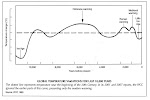


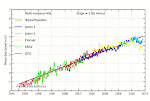

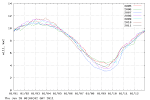

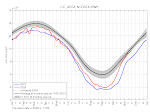

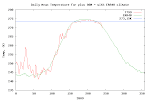
![geoengineering[1]](http://wattsupwiththat.files.wordpress.com/2011/04/geoengineering1.jpg?w=400&h=279)



